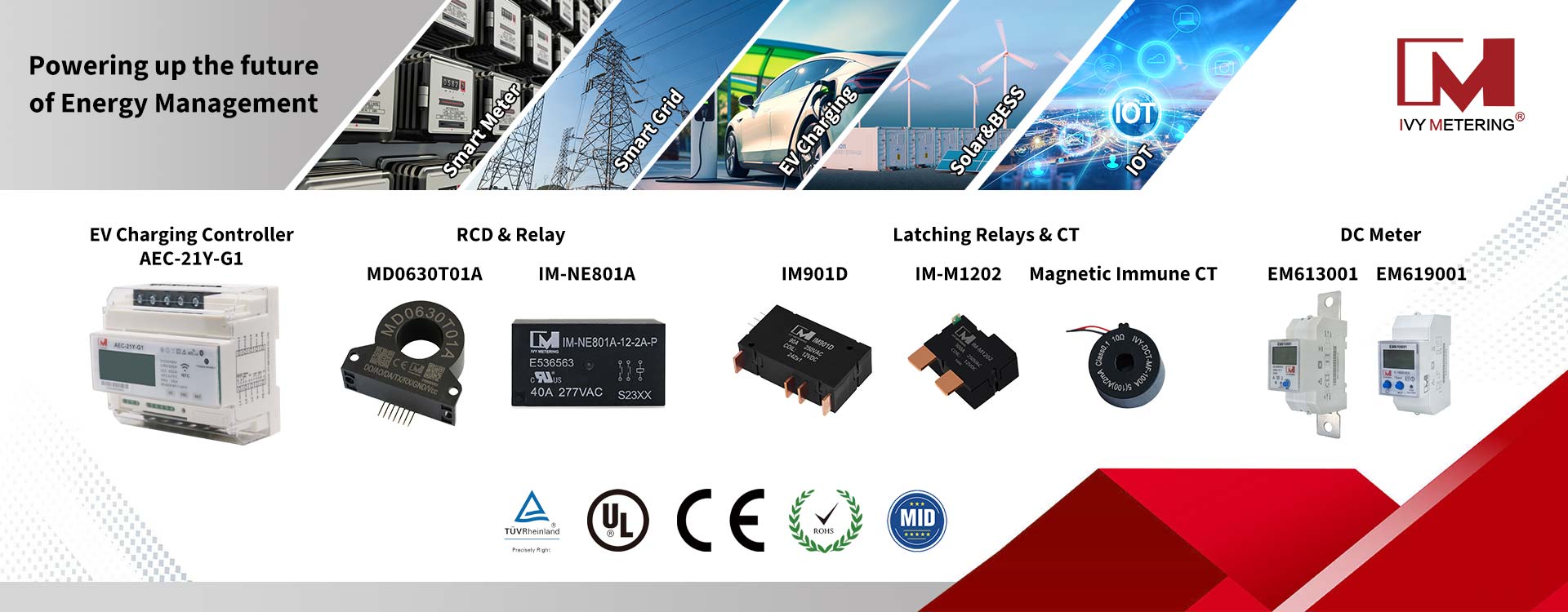How to develop a proper latching relay for Energy meters
Compared to other electric control switches, the latching relay has the potential to save amounts of energy significantly and is a low-cost component. Furthermore, the performance of the latching relay has been tested in market applications for many years and is the preferred control component for energy meters, and they are increasingly being used in the payment energy meters as well. In practice, it is often the case that the energy meter designer and the manufacturer don’t understand the structure and characteristic of magnetic latching relay very well, leading to misunderstandings in the requirements and choosing of standards which impacts the quality control of the payment energy meter to some extent.
The technical specification of the latching relay means that a series of technical requirements need to be applied to the design of the relay. The latching relay can only be used in an energy meter if it meets the technical requirements, however, if the technical specification is too strict and there is too much redundant ability, the cost will be unnecessarily high.
The main items of magnetic latching relay specifications are as following:
1. Performance requirement:the contact switching load of magnetic latching relay during normal operating, including voltage value, current , the nature of the power and the load characteristic;
2. Safe requirement:including the insulation level between the conductors which have different potentials, the level of lightning impulse withstand voltage, the clearances and creepage distance between the insulated conductor, the temperature rising and the fire resistance;
3. Reliability and durability:including electrical life mechanical life and the failure rate;
4. Fault resistance:such as over load, short circuit current , strong magnetic field, strong shock and vibration;
5. General performance: including rated input power (coil power) dimension, weight and operation time etc.
6. Environmental adaptability: including environmental temperature, humidity, atmospheric corrosion, and the degree of pollution etc.
7. Other features: like the performance required for meter assembly (solderability, solder heat resistant) and the logo etc.
Taking the above standards into account, it is important to consider the economics as well, in terms of cost reduction within the correct parameters. The importance of each performance indicator is not the same for a relay. Based on the level of its importance we are inclined to list the items in order of above. According to this principal, to specify a latching relay should follow these steps:
a) To determine the functional level to meet the requirements of the load switched;
b) To determine the security requirement according to IEC61810-1 and demand of energy meter standards;
c) Reliability and durability should be in accordance with the relevant stipulation of the energy meter standard and user requirements and failure rate could reference to IEC 61810-1;
d) The capability of fault resistance should be in accordance with the relevant stipulation of the standard energy meter (for example, the stipulation about the capability of short-circuit current withstanding in IEC 62055-31) and should be determined by conferring with users. The prevention of strong magnetic field interference, strong vibrations as well as strong shock is not necessary for the performance of an energy meter. Under normal circumstances, energy meters do not withstand these stresses. This is because of additional requirements to prevent the meter users from pilfering electricity. Neither International standards or National standards for energy meters or relays have yet requested for this. At present, some energy meter manufacturers have raised the demand in this respect, but have not yet put forward specific level ;
e) General performance should be based on technological possibilities and determined in consultation with users. Because it is a magnetic latching relay and does not consume electricity after action, and the operational frequency is very low in energy meters, we suggested that the indicator should be relaxed. This should improve reliability and reduce the difficulty of designing and manufacturing, thereby reducing the cost of relay. Meanwhile it would not reduce the energy meter performance or increase the cost of energy meter significantly, in addition, because the meters are used in fixed equipment.
In order to design and manufacture conveniently and reduce the cost, the restriction of dimensions, weight and operational time should not be too strict;
f) Environmental adaptability could be determined according to the internal environment of an energy meter, also according to the recommended values of IEC 61810-1 and determined in consultation with the user;
g) Other requirements refer to other provisions of the IEC standards. The Prestige Company researches and develops new products following the relevant standards of energy meters in conjunction with latching relay characteristics and eliminates the defects that existed in previous latching relays, such as:phase lack, contact adhesion in transient short-circuit current, insufficient vibration resistance, high temperature rise etc.
IVY specializes in the development and manufacturing of high-quality latching relays. We offer a line of latching relays spanning from 32A to 200A for single-phase Two-phase and three-phase switching purposes. our relays meet the industry's highest performance standards and offer the best value in the energy management market. In particular, we have developed an innovative relay-motor latching relay. IVY latching relays are highly customisable with many variants of terminal arrangements, which can be made to suit customer's needs. Shunts and current transformers can also be included to special order. Compared with magnetic latching relay, motor latching relay with 500mT permanent magnetic immunity, prevent contacts from being interfered by magnetic fields. And, the size is much smaller.












